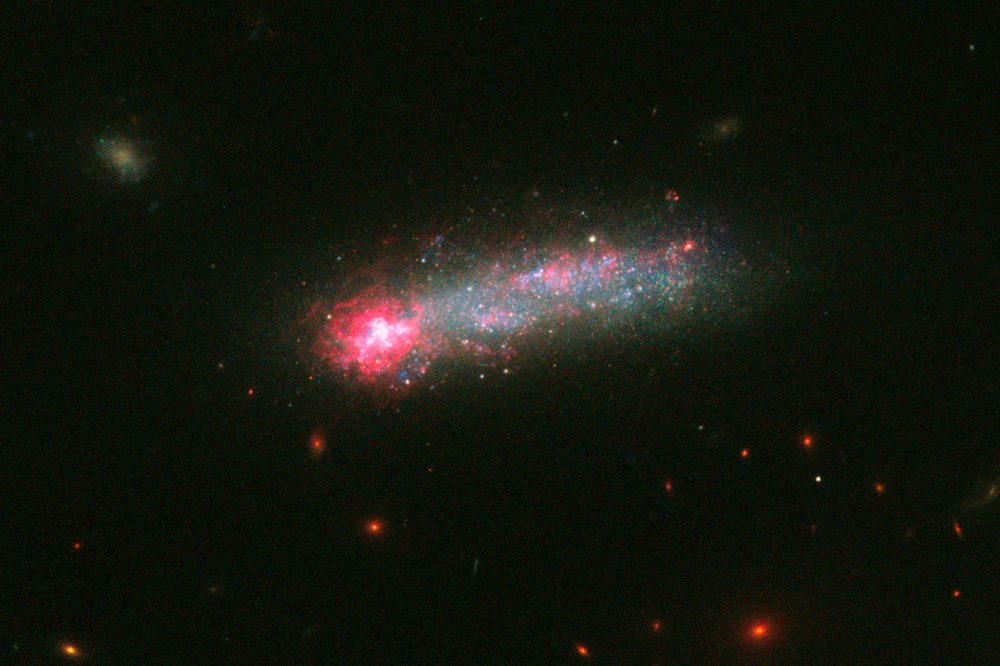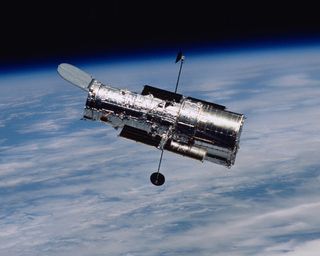
The Hubble Space Telescope has captured a stunning view of a fireworks display blazing up in deep space.
The celestial show comes courtesy of the dwarf galaxy Kiso 5639, which lies 82 million light-years from Earth in the constellation Ursa Major and hosts a frenzy of star birth.
"The dwarf galaxy is shaped like a flattened pancake, but because it is tilted edge-on, it resembles a skyrocket, with a brilliant blazing head and a long, star-studded tail," officials with the Space Telescope Science Institute in Baltimore, which operates Hubble's science program, wrote in a statement.
The majority of Kiso 5639's star-forming action is taking place in the galaxy's head, which is about 2,700 light-years wide. This ramped-up star birth has apparently been triggered by the accretion of gas in this region from surrounding space, researchers said.
The dwarf galaxy's head also features a number of large "holes," which are cavities in the gas blasted out by powerful supernova explosions.
Elongated galaxies such as Kiso 5639 are known as "tadpoles." There were much more abundant in the universe's early days than they are today, scientists said.

"I think Kiso 5639 is a beautiful, up-close example of what must have been common long ago," Debra Elmegreen, of Vassar College in New York, said in the same statement. "The current thinking is that galaxies in the early universe grow from accreting gas from the surrounding neighborhood. It's a stage that galaxies, including our Milky Way, must go through as they are growing up."
Get the Space.com Newsletter
Breaking space news, the latest updates on rocket launches, skywatching events and more!
Elmegreen is lead author of a new study that's based on observations of Kiso 5639 Hubble made with its Wide Field Camera 3 instrument. The paper has been accepted for publication in The Astrophysical Journal.
The new photo, which was released on June 28, combines Hubble images taken in February 2015 and July 2015.
Follow Mike Wall on Twitter @michaeldwall and Google+. Follow us @Spacedotcom, Facebook or Google+. Originally published on Space.com.
Join our Space Forums to keep talking space on the latest missions, night sky and more! And if you have a news tip, correction or comment, let us know at: community@space.com.

Michael Wall is a Senior Space Writer with Space.com and joined the team in 2010. He primarily covers exoplanets, spaceflight and military space, but has been known to dabble in the space art beat. His book about the search for alien life, "Out There," was published on Nov. 13, 2018. Before becoming a science writer, Michael worked as a herpetologist and wildlife biologist. He has a Ph.D. in evolutionary biology from the University of Sydney, Australia, a bachelor's degree from the University of Arizona, and a graduate certificate in science writing from the University of California, Santa Cruz. To find out what his latest project is, you can follow Michael on Twitter.
Most Popular

